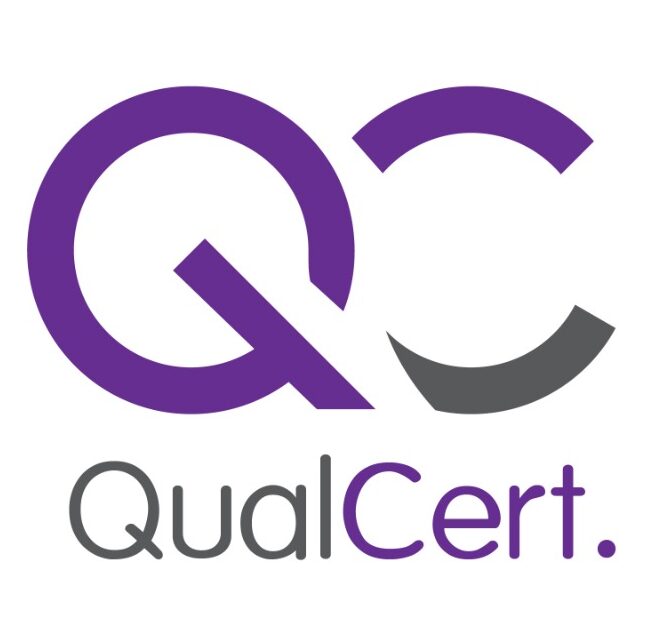The QualCert ISO 1514:2016 Paints and Varnishes — Standard Panels for Testing course is designed to provide learners with an in-depth understanding of the international standard that governs the preparation and use of standard panels in testing paints, varnishes, and related coatings. As the performance and durability of coatings largely depend on the quality of testing methods, ISO 1514:2016 ensures consistency, accuracy, and reliability in test results across industries.
The QualCert ISO 1514:2016 Paints and Varnishes — Standard Panels for Testing equips participants with the essential knowledge and practical skills to apply ISO 1514:2016 effectively, covering panel selection, preparation procedures, and test applications. Learners will gain insights into the role of standard panels in quality assurance, research and development, and regulatory compliance within the coatings and surface treatment sectors.
Whether you are a professional in the paints and coatings industry, a researcher, or a student exploring material science, this course provides the technical foundation to ensure compliance with global standards. By completing the QualCert ISO 1514:2016 Paints and Varnishes — Standard Panels for Testing , learners will enhance their expertise, improve testing reliability, and support innovation in product development and quality control.
Study Units for ISO 1514:2016 Paints and Varnishes — Standard Panels for Testing
The QualCert ISO 1514:2016 Paints and Varnishes — Standard Panels for Testing is a 30-credit qualification with a Total Qualification Time (TQT) of 180 hours, including 120 Guided Learning Hours (GLH). This program is meticulously crafted to deliver focused and efficient skill development in the field.
| Unit Ref# | Unit Title | Credits | GLH | TQT |
| QC04005 – 1 | Overview of Paint Testing Panels | 5 | 20 | 30 |
| QC04005 – 2 | Preparation and Conditioning of Standard Panels | 5 | 20 | 30 |
| QC04005 – 3 | Testing Techniques for Paint Adhesion and Durability | 5 | 20 | 30 |
| QC04005 – 4 | Data Interpretation and Test Accuracy Improvement | 5 | 20 | 30 |
| QC04005 – 5 | International Standards for Paint Testing | 5 | 20 | 30 |
| QC04005 – 6 | Materials and Surface Characteristics of Standard Panels | 5 | 20 | 30 |
Entry Requirements for ISO 1514:2016 Paints and Varnishes — Standard Panels for Testing
Minimum Age
- Candidates must be at least 18 years of age at the time of enrollment.
- This ensures learners possess the maturity required to understand technical concepts and industry practices.
- Younger applicants may be considered only under special approval and with evidence of strong academic or professional ability.
Educational Background
- A high school diploma or equivalent qualification (e.g., GED) is required.
- Candidates with a background in chemistry, materials science, or engineering will find the course especially beneficial.
- Applicants with vocational or technical training in coatings, paints, or industrial testing are strongly encouraged.
Experience
- Prior experience in the paints, coatings, or materials testing industry is recommended but not mandatory.
- Candidates with laboratory, quality control, or industrial testing experience will have an advantage.
- Even without direct experience, learners with strong analytical and technical interest are welcome.
Language Proficiency
- Proficiency in English is required, as all training materials and assessments are delivered in English.
- Applicants may need to provide proof of English proficiency through a recognized test or prior education.
- Strong communication skills in English are important for understanding technical terminology and reporting.
Additional Requirements
- Learners should demonstrate attention to detail and analytical thinking, crucial for testing and inspection tasks.
- Access to a reliable computer and internet connection is required for online study resources (if applicable).
- Candidates may also need to comply with health and safety requirements when conducting practical testing exercises.
Learning Outcomes for ISO 1514:2016 Paints and Varnishes — Standard Panels for Testing
1. Overview of Paint Testing Panels
Learning Outcomes:
By the end of this unit, learners will be able to:
- Explain the purpose and importance of standard panels in paint testing.
- Identify different types of paint testing panels and their applications.
- Describe the role of panels in ensuring consistent and reliable test results.
- Understand key factors influencing panel selection in paint durability testing.
2. Preparation and Conditioning of Standard Panels
Learning Outcomes:
By the end of this unit, learners will be able to:
- Demonstrate proper methods for preparing and conditioning panels prior to testing.
- Recognize the importance of environmental conditioning to simulate service conditions.
- Apply industry best practices for surface cleaning, drying, and storage of panels.
- Prevent contamination and defects during panel preparation to ensure test accuracy.
3. Testing Techniques for Paint Adhesion and Durability
Learning Outcomes:
By the end of this unit, learners will be able to:
- Describe standard techniques for evaluating paint adhesion on testing panels.
- Perform durability tests including scratch, abrasion, and weathering assessments.
- Select appropriate test methods based on panel and coating type.
- Interpret results to assess coating performance under various stress conditions.
4. Data Interpretation and Test Accuracy Improvement
Learning Outcomes:
By the end of this unit, learners will be able to:
- Analyze test data using statistical and qualitative approaches.
- Identify sources of error and variability in paint testing procedures.
- Apply corrective actions to improve repeatability and reliability of test results.
- Compile comprehensive reports that clearly communicate findings and conclusions.
5. International Standards for Paint Testing
Learning Outcomes:
By the end of this unit, learners will be able to:
- Identify key international standards related to paint testing panels (including ISO 1514:2016).
- Understand regulatory and quality requirements impacting paint testing.
- Apply standard protocols to ensure compliance and quality assurance.
- Stay updated with evolving industry standards and best practices.
6. Materials and Surface Characteristics of Standard Panels
Learning Outcomes:
By the end of this unit, learners will be able to:
- Identify common materials used in manufacturing standard paint testing panels.
- Understand how surface characteristics like texture and chemical composition affect test outcomes.
- Evaluate the impact of panel material choice on paint adhesion and durability tests.
- Recommend appropriate panel materials for specific paint formulations and testing goals.
This course on Introduction to Paints and Varnishes is designed for individuals with a professional interest or involvement in the coatings industry, as well as those seeking to gain a comprehensive understanding of paints and varnishes for personal or career development purposes. The course is particularly relevant for the following target audience:
Industry Professionals
- Professionals from paint manufacturing companies and coating application businesses.
- Employees in construction firms, automotive industries, and related sectors.
- Chemists, engineers, and technicians working in product development and testing.
- Quality control and production managers seeking standardized testing knowledge.
- Sales and marketing professionals looking to enhance technical expertise.
Students and Researchers
- Students pursuing degrees in chemistry, materials science, or engineering.
- Learners in fields like architecture and industrial design.
- Researchers exploring surface treatments, coatings, and material sciences.
- Scholars who require knowledge of ISO standards and compliance testing.
- Postgraduates and interns seeking practical exposure to industry practices.
Entrepreneurs and Small Business Owners
- Individuals aiming to start paint manufacturing or coating application businesses.
- Entrepreneurs interested in surface treatment and finishing industries.
- Business owners seeking to improve product quality and compliance.
- Small enterprises needing insights into manufacturing processes and testing.
- Innovators exploring new product formulations and sustainable practices.
Regulatory and Compliance Professionals
- Specialists ensuring compliance with environmental and safety regulations.
- Auditors monitoring industry standards and product certifications.
- Health and safety professionals in the coatings and chemicals industry.
- Environmental officers focusing on eco-friendly paint formulations.
- Compliance managers responsible for ISO adherence in manufacturing plants.
Educators and Trainers
- Teachers in chemistry, materials science, and engineering programs.
- Trainers developing vocational courses in coatings and applications.
- University professors looking to enhance curriculum with practical standards.
- Laboratory instructors involved in testing and quality control education.
- Mentors guiding research students in coating technologies.
DIY Enthusiasts and Homeowners
- Hobbyists passionate about painting, refinishing, and restoration projects.
- Homeowners undertaking DIY home improvement and renovations.
- Individuals learning about surface preparation and paint application techniques.
- Enthusiasts exploring furniture refinishing and decorative projects.
- Artists and creatives applying varnishes and coatings for artistic purposes.
Assessment and Verification
Assessment Framework :
This qualification consists of 6 mandatory assignments designed to assess the learner’s understanding and practical application of the required skills and knowledge. The key elements of the assessment framework include:
- Comprehensive Assignment Structure:
The assignments are designed to cover a range of topics within the qualification, ensuring that learners demonstrate their competence across all essential areas. - Pass Requirement:
Learners must successfully complete all 6 assignments to meet the requirements for certification. Each assignment must meet the specified criteria and demonstrate sufficient understanding and application of the subject matter. - Assessment Process:
Each assignment is reviewed and marked by a qualified assessor, with feedback provided to support learner development. - Final Completion Criteria:
The successful completion of all assignments is necessary for certification. Only learners who meet the required standards across all assignments will be awarded the qualification.
Quality Assurance & Verification:
QualCert applies a rigorous, multi-layered quality assurance system to ensure the reliability, consistency, and integrity of all assessments and results.
1. Internal Quality Assurance (IQA)
Conducted by the approved training centre:
- Assignment Evaluation:
Centre-approved Assessors and Internal Quality Assurers (IQAs) review the assignments to ensure they meet the assessment criteria and learning outcomes. - Standardisation:
Regular standardisation sessions are held to maintain consistency in assessment and marking practices across all centre staff. - Feedback & Support:
IQAs ensure that learners receive constructive feedback to aid their progress and improve future submissions.
2. External Quality Assurance (EQA)
Conducted by QualCert:
- Independent Verification:
QualCert’s External Quality Assurers (EQAs) verify the completed assignments and assess the quality and fairness of the marking process. - Centre Audits:
EQAs audit the centre’s compliance with QualCert’s quality assurance standards, reviewing assessment practices, learner records, and overall delivery. - Final Certification:
After satisfying the EQA’s verification process, QualCert will officially issue the certification to the learner.
QualCert delivers all qualifications exclusively through its network of officially approved training centres.
For registration or further information, please contact your nearest approved training centre.

